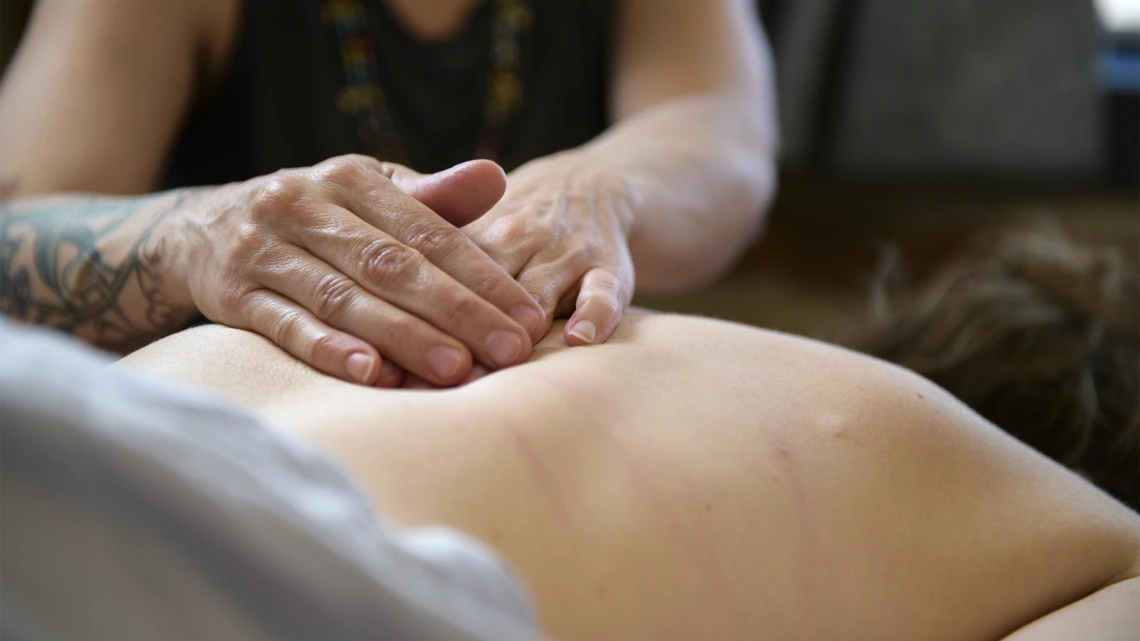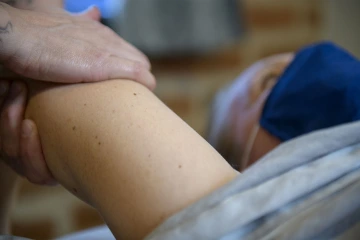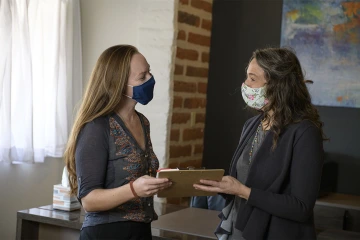Nursing Research Explores Massage Therapist Role in Reducing Cancer
Research moves from education about skin cancer risk to risk reduction.

New research from the College of Nursing produced an e-training module to inform massage therapists about skin cancer risk reduction and to train them to have conversations with clients about skin cancer risk reduction without compromising their scope of practice.

Massage therapists spend time with clients closely inspecting their skin, and with the new training program, they are prepared to discuss skin cancer prevention with sensitivity and knowledge.
Massage therapists are uniquely positioned to talk to clients about skin cancer: they often are able to spend more time with a client, interact with them more frequently and view more of a person’s skin surface area than a health care provider. This recognition led a University of Arizona College of Nursing researcher to explore ways to bring massage therapists (MTs) into a more active role in reducing skin cancer risk.
Lois J Loescher, PhD, RN, FAAN, and her team have explored the feasibility of partnering with MTs to reduce the most common form of cancer in the United States.
Taking the research a step further
During a typical full body massage, MTs have a view of each anatomical area of a client’s body, providing an opportunity to see skin cancer risk factors such as sunburn, tanning lines, high mole counts or suspicious lesions. Additionally, according to a 2002 study in the Journal of the American Board of Family Medicine, clients typically are more likely to discuss health promotion with an MT, which offers greater opportunities for communication and encouragement of effective skin cancer risk reduction behaviors.

According to a 2002 study in the Journal of the American Board of Family Medicine, clients typically are more likely to discuss health promotion with a massage therapist than a doctor.
Some MTs receive education about skin cancer while completing licensing and certification training; however, there is no national standard for the amount of content about the topic that should be included in massage therapy curricula. To help fill this gap, Dr. Loescher, who is a member of the UArizona Cancer Center, worked with her team to develop an e-training module with two purposes: to inform MTs about skin cancer risk reduction and to train MTs to have positive, client-focused conversations about skin cancer risk reduction without compromising their scope of practice.
Simulation for training
Dr. Loescher’s team utilized the DecisionSim™ online platform for the e-training. The team developed five case simulations, each highlighting different components of a conversation in the context of a massage client visit. Each case incorporated four to seven decision points for the participant to apply knowledge.

A majority of massage therapists involved in the study found the simulations useful and worth including in future training.
A majority of MTs found the simulations useful and worth including in the training of future MTs. Dr. Loescher and her team concluded that adding decision-simulation technology to the e-training modules was useful not only to evaluate participant knowledge and skills, but also to assess e-training content and delivery for future improvement. This innovative, practical application of simulation technology may be useful in a wide variety of health promotion and disease prevention contexts across disciplines and populations of study.
Dr. Loescher’s team is planning to continue testing the e-training with a larger sample of massage therapists in Sun Belt states in the U.S.

